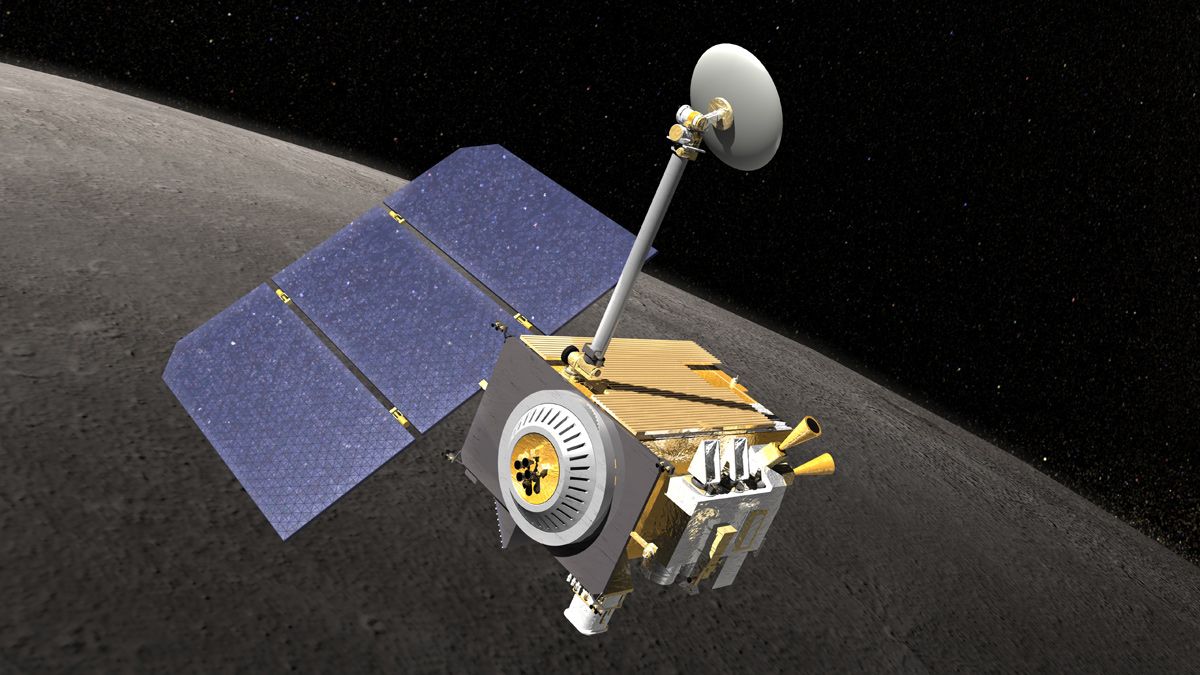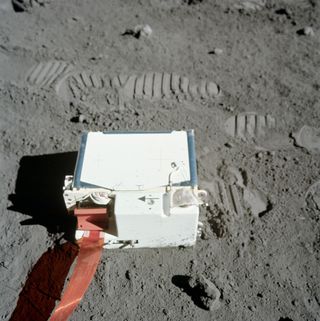Helium Spotted in Moon's Wispy Atmosphere

A NASA spacecraft has detected helium in the moon's tenuous atmosphere, confirming observations made four decades ago on the lunar surface.
NASA's Lunar Reconnaissance Orbiter (LRO) sniffed out the helium from above with an onboard spectrometer. The finding corroborates measurements made by the Lunar Atmosphere Composition Experiment (LACE), which was deployed by moonwalking Apollo 17 astronauts in 1972.
"The question now becomes, does the helium originate from inside the moon — for example, due to radioactive decay in rocks — or from an exterior source, such as the solar wind?" Alan Stern, of the Southwest Research Institute in Boulder, Colo., said in a statement. Stern is principal investigator of LRO's Lyman Alpha Mapping Project spectrometer, or LAMP.
While LAMP is primarily a surface-mapping tool, researchers used the instrument to study the moon's thin atmosphere over a campaign lasting more than 50 orbits. They detected helium, then applied several different techniques to confirm that LAMP wasn't just picking up gas in the interplanetary background. [10 Coolest Moon Discoveries by LRO]
Further LAMP observations could help scientists nail down the dominant source of the helium, Stern said.
"If we find the solar wind is responsible, that will teach us a lot about how the same process works in other airless bodies," Stern said.

The LACE measurements from the 1970s showed an increase in helium abundance as night progressed, a result that could be explained by atmospheric cooling (which concentrates atoms at lower altitudes). LAMP should build on those findings by investigating how helium abundances vary with latitude, researchers said.
Sign up for the Live Science daily newsletter now
Get the world’s most fascinating discoveries delivered straight to your inbox.
The $504 million LRO probe launched in June 2009 along with a piggyback spacecraft called LCROSS. In October of that year, LCROSS slammed intentionally into a shadowed crater at the moon's south pole, unearthing lots of water ice.
LRO is about the size of a Mini Cooper, and it carries seven instruments to observe the moon. The spacecraft circles the moon in a polar orbit, at an altitude of about 31 miles (50 kilometers).
For the first year of its operational life, LRO scouted the moon to help NASA plan for future lunar exploration missions. In September 2010, the probe wrapped up this mission and shifted into a pure science mode.
"These ground-breaking measurements were enabled by our flexible operations of LRO as a science mission, so that we can now understand the moon in ways that were not expected when LRO was launched in 2009," said Richard Vondrak, LRO project scientist at NASA’s Goddard Space Flight Center in Greenbelt, Md.
This story was provided by SPACE.com, a sister site to LiveScience. Follow SPACE.com for the latest in space science and exploration news on Twitter @Spacedotcom and on Facebook.













